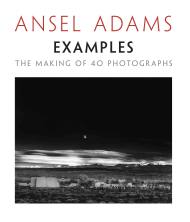By clicking “Accept,” you agree to the use of cookies and similar technologies on your device as set forth in our Cookie Policy and our Privacy Policy. Please note that certain cookies are essential for this website to function properly and do not require user consent to be deployed.
The Camera
Contributors
By Ansel Adams
With Robert Baker
Formats and Prices
Price
$35.00Price
$46.00 CADFormat
Format:
- Trade Paperback $35.00 $46.00 CAD
- ebook (Digital original) $13.99 $17.99 CAD
Also available from:
Ansel Adams (1902-1984) produced some of the 20th century’s most iconic photographic images and helped nurture the art of photography through his creative innovations and peerless technical mastery.
The Camera–the first volume in Adams’ celebrated series of books on photographic techniques–has taught generations of photographers how to harness the camera’s artistic potential. This time-honored handbook distills the knowledge gained through a lifetime in photography and remains as vital today as when it was first published.
Along with visualization, image management, Adams’ famous Zone System, and other keys to photographic artistry, The Camera covers 35mm, medium-format, and large-format view cameras, while offering detailed advice on camera components such as lenses, shutters, and light meters. Beautifully illustrated with photographs as well as instructive line drawings, this classic manual belongs on every serious photographer’s bookshelf.
“Adams is a clear-thinking writer whose concepts cannot but help the serious photographer.” – New York Times
“A master-class kind of guide from an undisputed master.” – Publishers Weekly
Over 1 million copies sold.
Genre:
- On Sale
- Jun 1, 1995
- Page Count
- 224 pages
- Publisher
- Ansel Adams
- ISBN-13
- 9780821221846
Newsletter Signup
By clicking ‘Sign Up,’ I acknowledge that I have read and agree to Hachette Book Group’s Privacy Policy and Terms of Use







